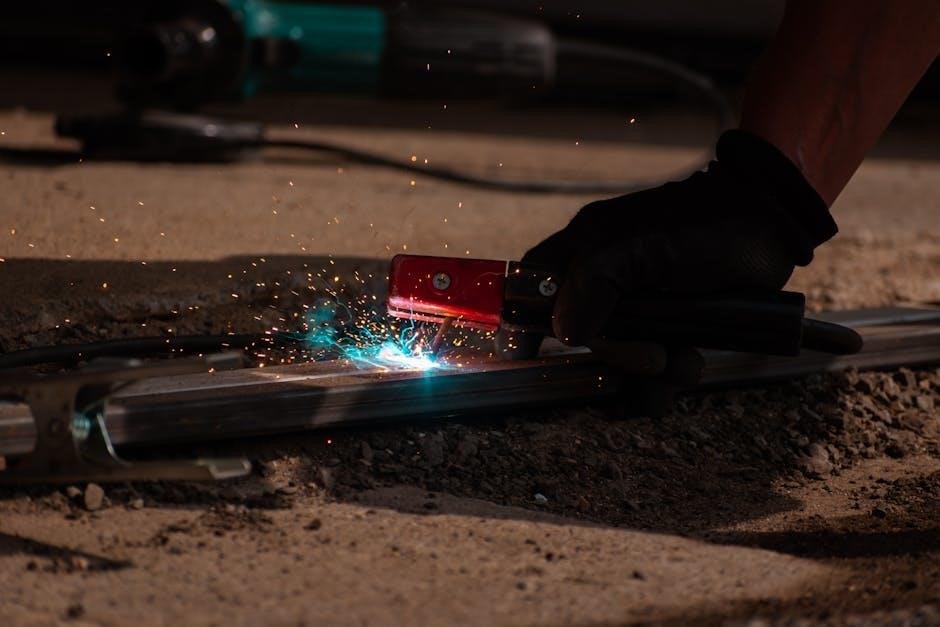
Welcome to the Fire Angel Smoke Alarm Manual, your comprehensive guide to understanding and installing FireAngel smoke alarms for enhanced home and office safety.
Overview of Fire Angel Smoke Alarms
Fire Angel smoke alarms are advanced safety devices designed to detect smoke and alert users to potential fires. Available in various models, including optical and heat detectors, these alarms are suitable for different rooms and environments. They are known for their reliability, ease of installation, and compatibility with both standalone and interconnected systems. Fire Angel alarms often feature advanced detection technology, minimizing false alarms while ensuring early warning in case of fire. Their user-friendly designs and comprehensive manuals make them a popular choice for home and office safety, ensuring optimal protection at all times.
Importance of Reading the Manual
Reading the Fire Angel smoke alarm manual is essential for proper installation, operation, and maintenance. It provides critical information on positioning, testing, and troubleshooting, ensuring optimal performance. The manual outlines safety standards and compliance requirements, helping users meet local regulations. By understanding the device’s features and limitations, users can maximize protection and minimize false alarms. Regular maintenance instructions, such as cleaning and battery replacement, are also detailed, ensuring the alarm remains reliable. Familiarizing yourself with the manual guarantees effective use and enhances overall fire safety in your home or workplace.
Structure of the Manual
The Fire Angel smoke alarm manual is organized to ensure ease of understanding and practical application. It begins with an introduction to the device, followed by an overview of its key features. Detailed installation guidelines are provided, including steps for choosing the right location and testing post-installation. Maintenance and troubleshooting sections offer solutions for common issues like false alarms and connectivity problems. The manual also covers fire safety best practices and compliance with safety standards. Finally, FAQs and a conclusion summarize essential points, ensuring users can maximize their smoke alarm’s effectiveness and stay protected.

Key Features of Fire Angel Smoke Alarms
Fire Angel smoke alarms feature advanced detection technology, interlinking capabilities, battery and hardwired options, and voice alerts for enhanced safety and reliability in various settings.
Types of Fire Angel Smoke Alarms
Fire Angel offers a range of smoke alarms, including optical, ionization, and combination models. Optical alarms, like the FireAngel WST-630, detect slow-smoldering fires. Heat alarms, such as the FA6720, are ideal for kitchens. Combination alarms, like the SCB10, detect both smoke and carbon monoxide. Each type is designed for specific areas, ensuring comprehensive protection. Choose the right model based on your space and needs for optimal safety.
Advanced Detection Technology
Fire Angel smoke alarms utilize cutting-edge detection technology to ensure early fire detection. Optical sensors excel at identifying slow-smoldering fires, while intelligent algorithms minimize false alarms. Advanced models incorporate multi-criteria detection, combining smoke and heat sensing for enhanced accuracy. Some alarms also feature carbon monoxide detection, providing comprehensive safety. These technologies ensure rapid response to potential threats, offering peace of mind and reliable protection for homes and offices. By leveraging innovation, Fire Angel alarms deliver superior performance in fire detection and prevention.
Connectivity and Interlinking Capabilities
Fire Angel smoke alarms offer advanced connectivity and interlinking features to enhance safety and convenience. Many models can wirelessly interconnect with other Fire Angel devices, ensuring all alarms activate simultaneously upon detection. This seamless integration provides whole-home protection, alerting occupants to potential threats regardless of where the fire starts. Certain models also support smart features, such as app notifications and voice alerts via smart speakers. These capabilities ensure rapid response and peace of mind, making Fire Angel alarms a reliable choice for modern homes and offices.
Battery and Hardwired Options
Fire Angel smoke alarms are available in both battery-powered and hardwired models, offering flexibility for different installation needs. Battery-powered alarms are ideal for easy installation and portability, while hardwired models provide a permanent solution with a backup battery. Many Fire Angel devices, such as the ST-622T and WST-630, support both options, ensuring continuous protection even during power outages. Regular battery replacement is essential for battery-powered units, while hardwired alarms are preferred for new constructions or renovations. Both options ensure reliable performance and adherence to safety standards, providing peace of mind for users.

Installation Guide
This section provides a detailed, step-by-step guide for installing Fire Angel smoke alarms, ensuring optimal placement and functionality for maximum fire safety in your home or office.
Choosing the Right Location
Proper placement of your Fire Angel smoke alarm is crucial for effective fire detection. Install smoke alarms on every level of your home, inside and outside sleeping areas. Avoid areas prone to humidity, such as bathrooms, or extreme temperatures below -10°C. Optimal locations include hallways, landings, and bedrooms. Ensure alarms are at least 10 feet away from cooking appliances to minimize false alarms. Avoid obstructing the sensor with curtains or furniture. Always follow local fire safety regulations and the manufacturer’s guidelines for installation. This ensures maximum protection and reliability in detecting potential fire hazards.
Step-by-Step Installation Process
Begin by carefully removing the smoke alarm from its packaging and ensuring all components are included. Identify the ideal location based on the manual’s guidelines, typically on ceilings or walls in hallways, landings, and bedrooms. Clean the installation area to ensure proper adhesion or screw placement. Attach the mounting bracket securely, following the manufacturer’s instructions. Install the smoke alarm onto the bracket, ensuring it clicks into place. Finally, test the alarm by pressing the test button to confirm it is functioning correctly. Refer to the manual for specific details on hardwired or battery-powered models.
Testing the Smoke Alarm Post-Installation
After installation, press and hold the test button on the smoke alarm to ensure it emits a loud, clear sound. Check that all interconnected alarms activate simultaneously if applicable. Use a test spray (available at hardware stores) to verify the sensor’s sensitivity. Ensure the alarm sounds for at least 30 seconds and reaches a minimum decibel level of 85dB. Repeat the test for each smoke alarm in your system to confirm proper functionality and connectivity. This step ensures your safety and compliance with fire safety standards.

Maintenance and Care
Regularly clean the smoke alarm to ensure optimal performance. Replace batteries as specified and test the alarm monthly. Follow the manual for detailed maintenance instructions to ensure reliability and safety.
Cleaning the Smoke Alarm
Regular cleaning is essential for maintaining your Fire Angel smoke alarm’s efficiency. Use a soft, dry cloth to gently wipe the exterior and remove any dust or debris. Avoid using harsh chemicals or liquids, as they may damage the sensor. For the interior, a vacuum cleaner with a soft brush attachment can be used to remove dust particles that may interfere with detection accuracy. Cleaning should be performed every 6 months or as needed to ensure optimal performance and reliability.
Replacing Batteries
Replacing batteries in your Fire Angel smoke alarm ensures continuous protection. For battery-powered models, open the unit by twisting it counterclockwise. Remove the old battery and insert a new one, ensuring the positive terminal faces correctly. For hardwired alarms, turn off the power at the circuit breaker before replacing the backup battery. Test the alarm after replacement by pressing the test button to confirm it’s functioning properly. Replace batteries annually or when a low-battery alert sounds to maintain reliability and safety.
Regular Testing and Inspection
Regular testing and inspection of your Fire Angel smoke alarm are crucial for ensuring its reliability and effectiveness. Test the alarm monthly by pressing the test button to verify it emits a clear, loud signal. Inspect the alarm for dust or debris buildup, which can impair performance. Clean the unit with a soft brush or vacuum cleaner if necessary. Additionally, check the battery level (for battery-powered models) and ensure all connections are secure (for hardwired units). Annual inspections should include testing and cleaning to maintain optimal functionality and safeguard against potential fires.

Troubleshooting Common Issues
Identify common issues like false alarms or malfunctions. Check for dust in sensors, ensure proper installation, and verify battery connections. Refer to the manual for solutions.
Resolving False Alarms
False alarms can occur due to dust, steam, or cooking fumes. To resolve this, clean the sensor with a vacuum or soft brush. Ensure proper ventilation in the room. If alarms persist, consider relocating the device away from kitchens or bathrooms. For models with a hush button, press it to temporarily silence the alarm. Regular maintenance, like replacing batteries annually, can also help minimize false triggers. Refer to the manual for specific troubleshooting steps tailored to your FireAngel smoke alarm model.
Addressing Device Malfunctions
If your FireAngel smoke alarm malfunctions, first check the battery connections and ensure it is fully powered. Clean the sensor with a soft brush or vacuum to remove dust or debris. If the issue persists, reset the device by removing the battery for 30 seconds. For hardwired models, check the wiring connections. Consult the user manual for troubleshooting specific to your model. If the problem remains unresolved, contact FireAngel customer support or replace the unit if it’s under warranty. Regular maintenance can help prevent future malfunctions and ensure reliable performance.
Fixing Connectivity Problems
If your FireAngel smoke alarms are interconnected and experiencing connectivity issues, check the wiring between devices for loose connections or damage. Ensure all alarms are powered on and synced correctly. Reset the system by turning off the power, waiting 30 seconds, and turning it back on. For wireless models, verify the interlink frequency is consistent across all units. Refer to the manual for specific instructions, as procedures may vary by model. Testing the system after troubleshooting ensures proper connectivity and reliable performance in case of emergencies.

Understanding Fire Safety
Fire safety involves understanding fire behavior, combustion, and preventive measures. Recognizing the fire triangle—fuel, oxygen, and heat—helps in mitigating risks and ensuring effective smoke alarm systems for early detection.
The Role of Smoke Alarms in Fire Safety
Smoke alarms play a crucial role in fire safety by providing early detection of fires, enabling timely evacuation and reducing risks of injury or fatality. FireAngel smoke alarms, equipped with advanced detection technology, quickly identify potential threats, giving users precious minutes to escape. Their optical sensors excel at detecting smoldering fires, while interlinking capabilities ensure whole-building alerts. Proper installation and maintenance, as outlined in the manual, are essential for reliability. Smoke alarms are a cornerstone of fire safety, empowering individuals to act swiftly and prevent catastrophic outcomes;
Creating an Emergency Escape Plan
Creating an emergency escape plan is vital for home and office safety. Identify all exits, plan a safe route, and practice drills regularly. Consider special needs for children, pets, or individuals with disabilities. Designate a meeting point outside the premises for everyone to gather once escaped. This ensures accountability and aids rescue teams. Keep emergency contact numbers accessible. A well-rehearsed plan minimizes panic, ensuring swift evacuation and enhancing safety. Regular updates and drills are essential to adapt to any changes in the environment.
Additional Fire Safety Measures
Beyond smoke alarms, ensure comprehensive fire safety by installing fire extinguishers and fire blankets. Conduct regular fire drills to familiarize everyone with escape routes. Store flammable materials safely, away from heat sources. Secure electrical appliances and avoid overloaded circuits. Keep emergency phone numbers visible. Regularly inspect fire-related equipment and ensure proper maintenance. Teach family members how to use fire extinguishers effectively. These measures, combined with smoke alarms, create a robust safety system to protect lives and property in case of emergencies.

Compliance with Safety Standards
Fire Angel smoke alarms comply with international safety standards, ensuring reliability and protection. The manual provides guidelines for installation, maintenance, and adherence to certifications for optimal functionality.
Meeting Local Fire Safety Regulations
Fire Angel smoke alarms are designed to meet local fire safety regulations, ensuring compliance with national and regional standards. The manual provides specific guidelines for installation locations, such as hallways, bedrooms, and living areas, to maximize protection. It emphasizes the importance of positioning alarms in areas where temperatures remain consistent, avoiding kitchens and bathrooms to reduce false alarms. Additionally, the manual highlights the need to interconnected alarms for enhanced safety in multi-story homes or large spaces. By following these guidelines, users can ensure their Fire Angel smoke alarms operate effectively and meet legal requirements. Proper placement and interconnectivity are crucial for comprehensive fire detection and alert systems, offering peace of mind and reliable protection. Regular inspections and maintenance, as outlined in the manual, further ensure ongoing compliance with safety standards.
Certifications and Approvals
Fire Angel smoke alarms are certified to meet rigorous safety standards, ensuring reliability and compliance with fire safety laws. They are approved under BS 5839-6 and hold CE markings, demonstrating adherence to European safety regulations. Additionally, they are certified by organizations like Kitemark, reinforcing their credibility. These certifications ensure that Fire Angel smoke alarms are trusted for their performance and durability, providing users with peace of mind. Meeting these standards guarantees that the alarms are effective in detecting fires and alerting occupants, making them a vital component of home and office safety systems.
Standards for Smoke Alarm Installation
Fire Angel smoke alarms are designed to meet strict installation standards, ensuring optimal performance and compliance with fire safety regulations. Adherence to BS 5839-6 guidelines guarantees proper placement, spacing, and positioning of alarms for maximum effectiveness. These standards emphasize the importance of installing smoke alarms on every level of a building and inside sleeping areas. Compliance with these norms ensures that Fire Angel smoke alarms provide reliable early warning in the event of a fire, safeguarding lives and property. Proper installation according to these standards is critical for maintaining the integrity of fire safety systems.

FAQs and User Queries
Fire Angel smoke alarm manuals address common user questions, troubleshooting tips, and technical specifications to ensure optimal performance and user satisfaction.
Common Questions About Fire Angel Smoke Alarms
Users often inquire about the best locations for Fire Angel smoke alarms, optimal testing methods, and resolving false alarms. The manual provides clear guidance on installation, maintenance, and troubleshooting. frequently Asked Questions also cover battery replacement, interlinking capabilities, and compliance with safety standards. Additional queries address the differences between optical and ionization sensors, as well as how to integrate Fire Angel alarms with existing fire safety systems. This section ensures users have quick access to solutions for common concerns, enhancing their safety and confidence.

Clarifications on Technical Specifications
Common questions about Fire Angel smoke alarms often focus on sensor types, interlinking capabilities, and battery life. Optical smoke alarms excel at detecting slow-burning fires but may cause nuisance alarms from cooking fumes. Ionization sensors are better for fast-flaming fires but less suitable for smoldering ones. The manual clarifies that most models are compatible with interlinking, allowing whole-home protection. Battery-powered alarms offer convenience, while hardwired versions provide reliability. Users also inquire about sensor accuracy and compliance with standards like EN 14604, ensuring reliability and safety. These clarifications help users understand device performance and capabilities.
Addressing Concerns About False Alarms
False alarms with Fire Angel smoke alarms often arise from steam, cooking fumes, or dust particles. To minimize these, ensure alarms are placed at least 300mm away from kitchens and bathrooms. Regularly cleaning the sensor with a vacuum or soft brush can reduce false triggers. If a false alarm occurs, press the silence button to temporarily mute the alarm. For persistent issues, consider replacing the unit or consulting the manual for troubleshooting. Remember, occasional false alarms are normal and do not compromise the device’s ability to detect real fires.

The Fire Angel Smoke Alarm Manual provides essential guidance for installation, maintenance, and troubleshooting. Proper placement, regular testing, and timely battery replacement are emphasized. Understanding detection technologies and connectivity options enhances safety. Adhering to local regulations ensures compliance. Users are encouraged to follow manufacturer instructions for optimal performance. Regular inspections and cleaning prevent false alarms. Addressing malfunctions promptly maintains reliability. By adhering to these guidelines, users can ensure their Fire Angel smoke alarms function effectively, providing critical protection in emergencies. Compliance with safety standards ensures long-term reliability and efficiency in fire detection.
Final Tips for Optimal Use
Commit to regular testing and maintenance to ensure your Fire Angel smoke alarm functions optimally. Clean dust from sensors monthly and replace batteries annually. Always test alarms after cleaning or battery replacement. Develop a clear escape plan and practice it with household members. Replace alarms every 10 years or as per manufacturer guidelines. Stay informed about local fire safety regulations and update your system accordingly. By following these tips, you ensure reliable protection and peace of mind in case of emergencies. Consistent upkeep is key to maximizing safety and efficiency.